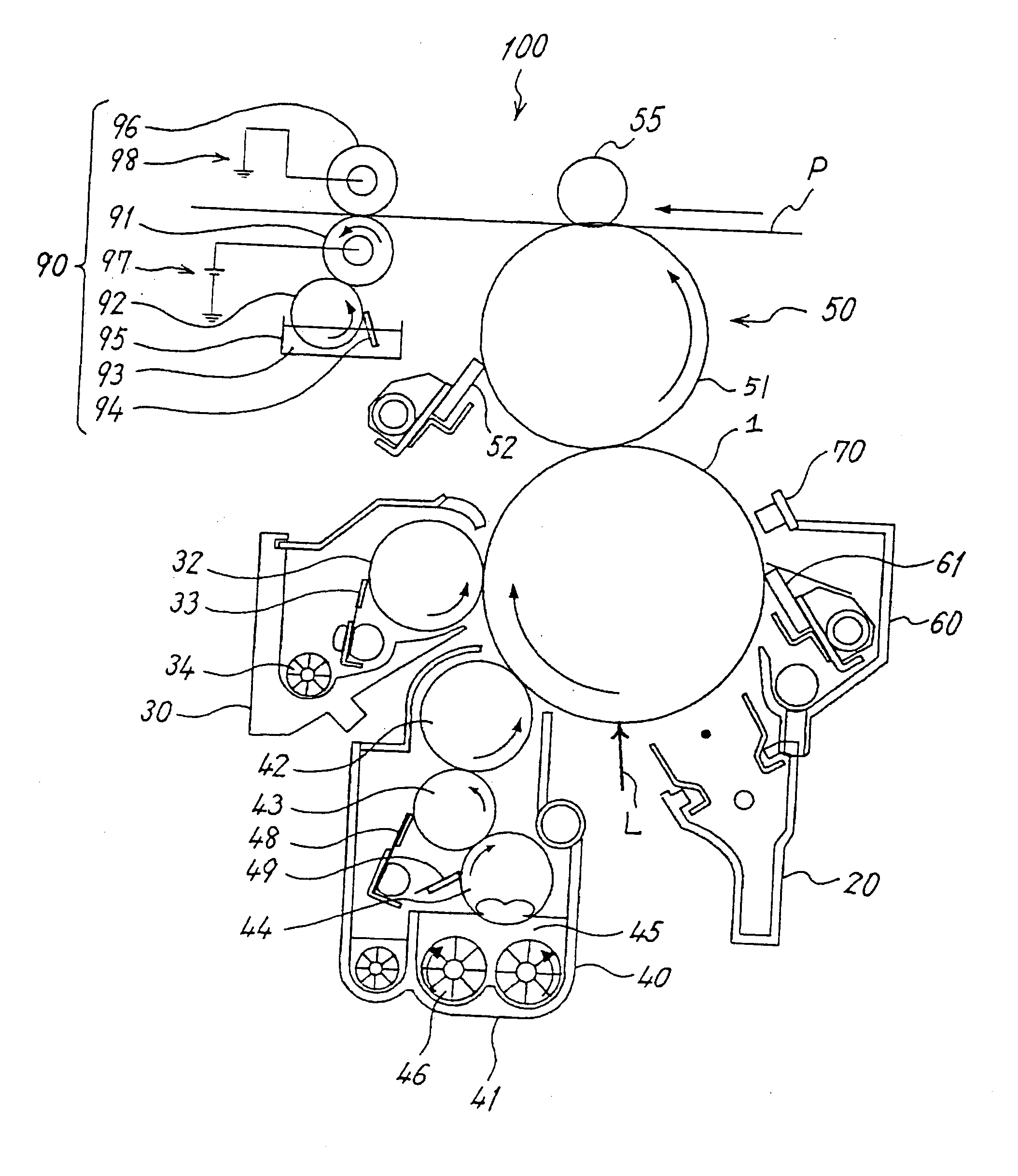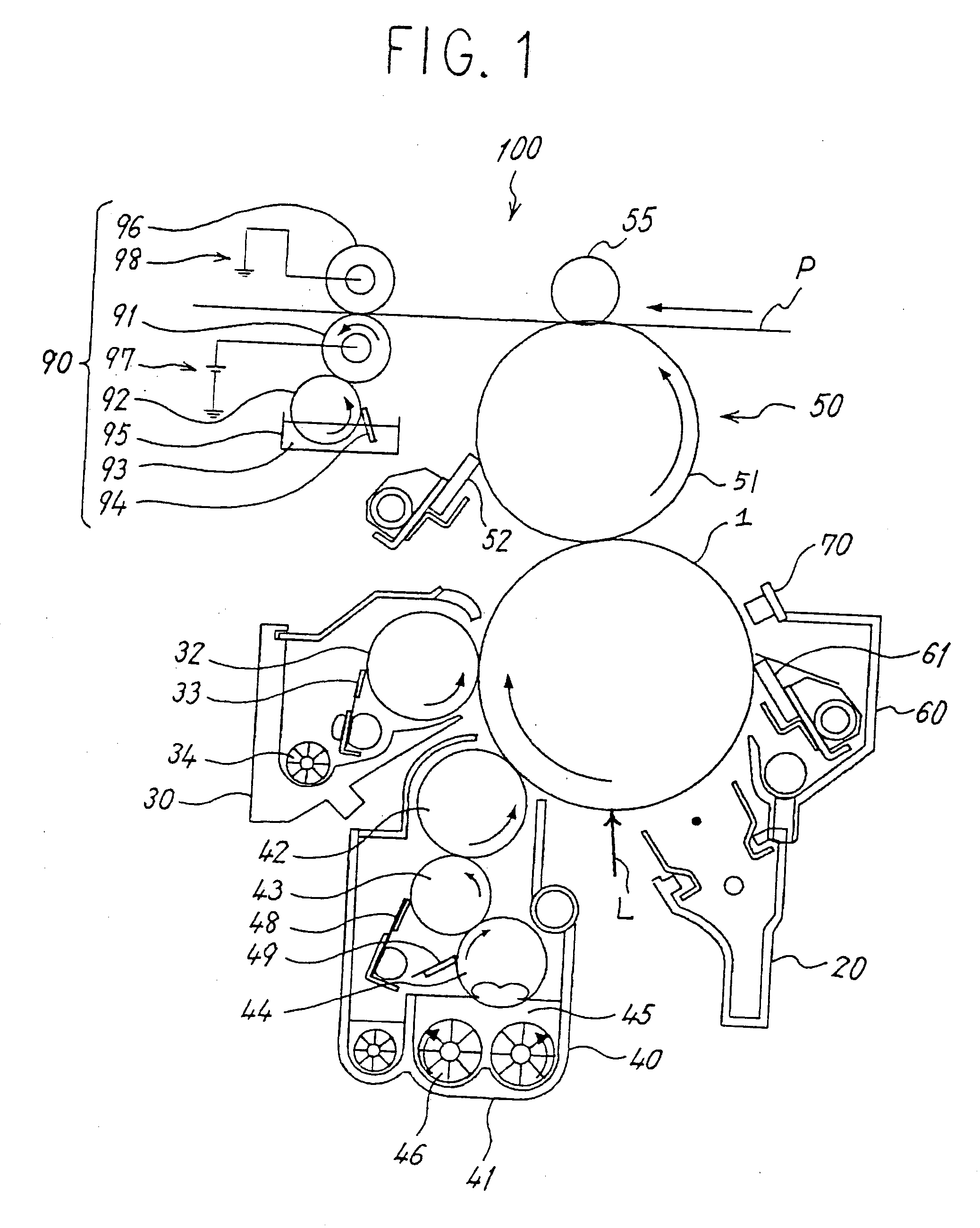Fixing apparatus for nonheat fixing system, and image forming apparatus having fixing apparatus
a fixing system and fixing apparatus technology, applied in the direction of electrographic process apparatus, instruments, optics, etc., can solve the problems of deteriorating image quality, reducing the heating temperature of the fixing process more than the fixing system, and transferring toner on the recording medium
- Summary
- Abstract
- Description
- Claims
- Application Information
AI Technical Summary
Benefits of technology
Problems solved by technology
Method used
Image
Examples
example 1
[0166] In this example, a formulation for the fixer having a good affinity for the liquid developer is employed. [0167] Diisopropyl adipate (softener, LD50=5 [g / kg])
[0168] 10 [wt / %][0169] Dimethylsiloxane (50 [mPa·s], diluting solution, LD50=15 [g / kg])
[0170] 90 [wt / %]
[0171] The fixing apparatus was used to apply the abovementioned fixer at an adhered amount of 300 through 500 [mg / A4] to an unfixed image on the transfer paper, which is created by the printer 100 shown in FIG. 1, and the image was evaluated in a smear test. The time required for satisfying the smear target value was 2 [minutes] after application of the fixer. The loss amount in the volatility measurement was 1[%] or less, and odor was not detected at all.
example 2
[0172] In this example, a formulation for the fixer having a good affinity for the liquid developer is employed. [0173] Diisobutyl adipate (softener, LD50=12.3 [g / kg])
[0174] 50 [wt / %][0175] Dimethylsiloxane (50 [mPa·s], diluting solution, LD50=15 [g / kg])
[0176] 50 [wt / %]
[0177] The fixing apparatus was used to apply the abovementioned fixer at an adhered amount of 50 through 100 [mg / A4] to an unfixed image on the transfer paper, which is created by the printer 100 shown in FIG. 1, and the image was evaluated in a smear test. The time required for satisfying the smear target value was 1 [minute] or less. The loss amount in the volatility measurement was 1[%] or less, and odor was not detected at all.
example 3
[0178] In this example, a formulation for the fixer having a good affinity for the liquid developer is employed. [0179] Diisobutyl adipate (softener, LD50=12.3 [g / kg]) [0180] 50 [wt / %][0181] Isopar-V (14.8 [mpa·s], diluting solution) [0182] 50 [wt / %]
[0183] The fixing apparatus was used to apply the abovementioned fixer at an adhered amount of 40 through 90 [mg / A4] to an unfixed image on the transfer paper, which is created by the printer 100 shown in FIG. 1, and the image was evaluated in a smear test. The time required for satisfying the smear target value was 1 [minute] or less. The loss amount in the volatility measurement was 1[%] or less, and odor was not detected at all.
PUM
 Login to View More
Login to View More Abstract
Description
Claims
Application Information
 Login to View More
Login to View More - R&D
- Intellectual Property
- Life Sciences
- Materials
- Tech Scout
- Unparalleled Data Quality
- Higher Quality Content
- 60% Fewer Hallucinations
Browse by: Latest US Patents, China's latest patents, Technical Efficacy Thesaurus, Application Domain, Technology Topic, Popular Technical Reports.
© 2025 PatSnap. All rights reserved.Legal|Privacy policy|Modern Slavery Act Transparency Statement|Sitemap|About US| Contact US: help@patsnap.com



